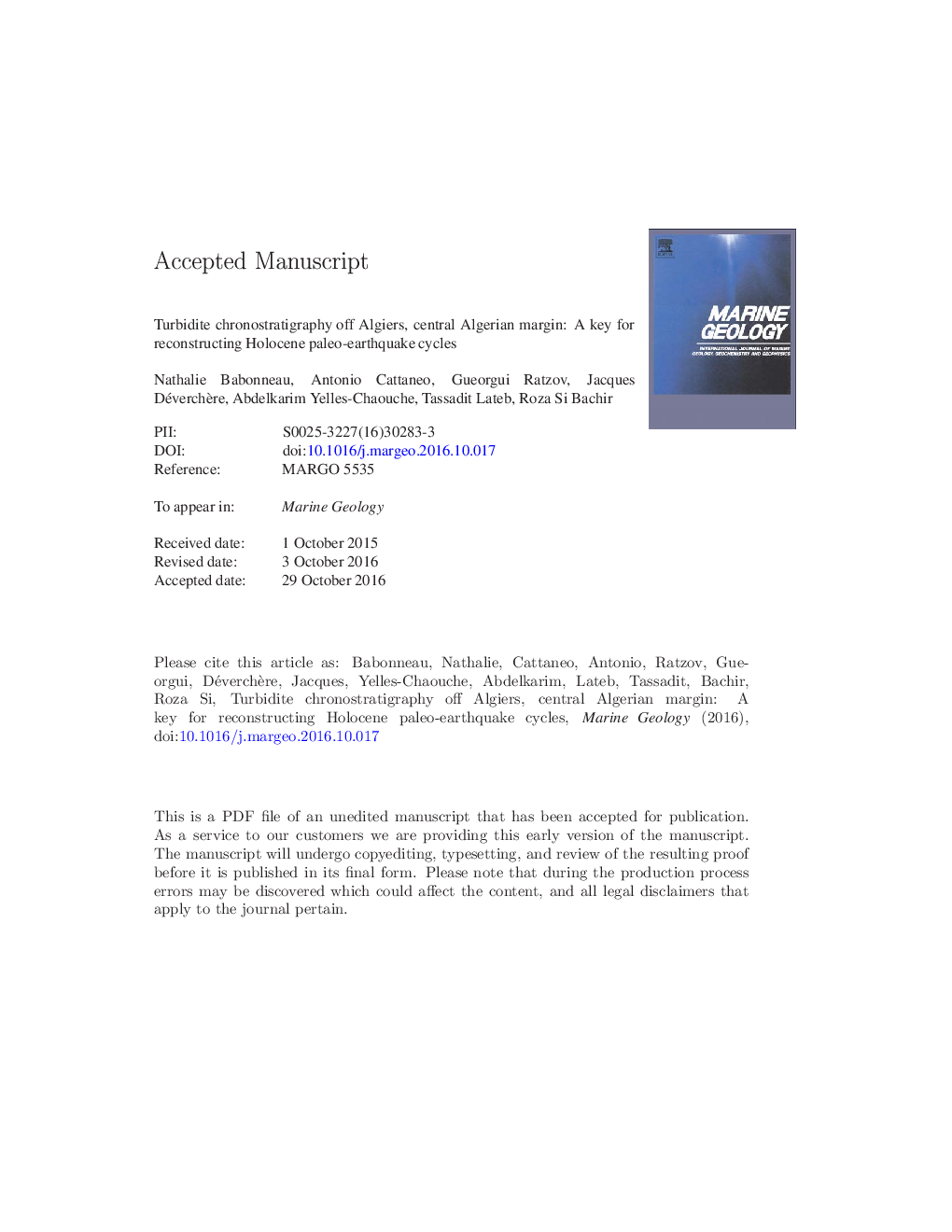| Article ID | Journal | Published Year | Pages | File Type |
|---|---|---|---|---|
| 5784420 | Marine Geology | 2017 | 51 Pages |
Abstract
The main historical earthquakes in the Algiers area (2003, 1716 and 1365Â CE) reasonably correlate with three out of the four last turbidites, strengthening the hypothesis that turbidites are suitable markers for Holocene paleoseismology. Recurrence intervals of turbidites range between 50 and 900Â yr, defining quiescence periods exceeding 450Â yr. Three quiescence periods lasting about 800, 1400 and 500Â yr (7-6.2Â ka BP, 5.4-4Â ka BP, and 1.5-1Â ka BP, respectively) support irregular earthquake cycling. Earthquake-triggered turbidites are more frequent in the study area than in the western adjacent margin segment (offshore El Asnam). This higher frequency could arise from the close location of the seismogenic faults beneath the continental slope, whereas they are located several tenths of kilometers onland in the El Asnam area, implying less instabilities of the submarine slope.
Keywords
Related Topics
Physical Sciences and Engineering
Earth and Planetary Sciences
Geochemistry and Petrology
Authors
Nathalie Babonneau, Antonio Cattaneo, Gueorgui Ratzov, Jacques Déverchère, Abdelkarim Yelles-Chaouche, Tassadit Lateb, Roza Si Bachir,
